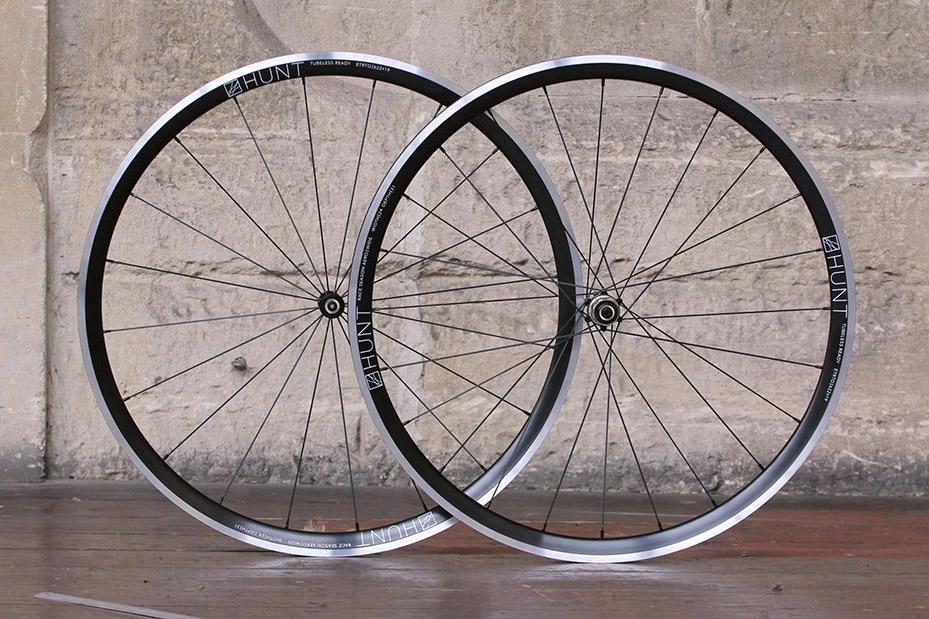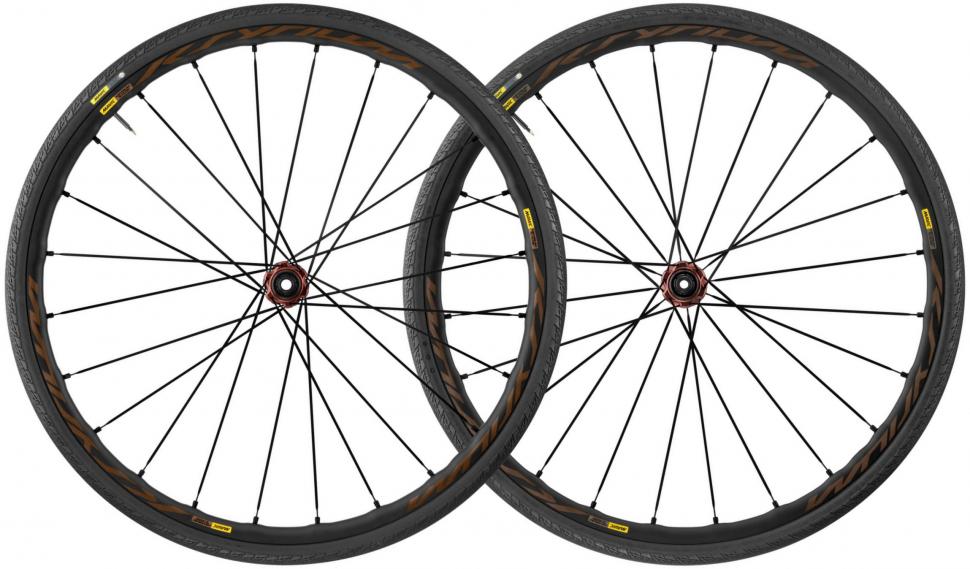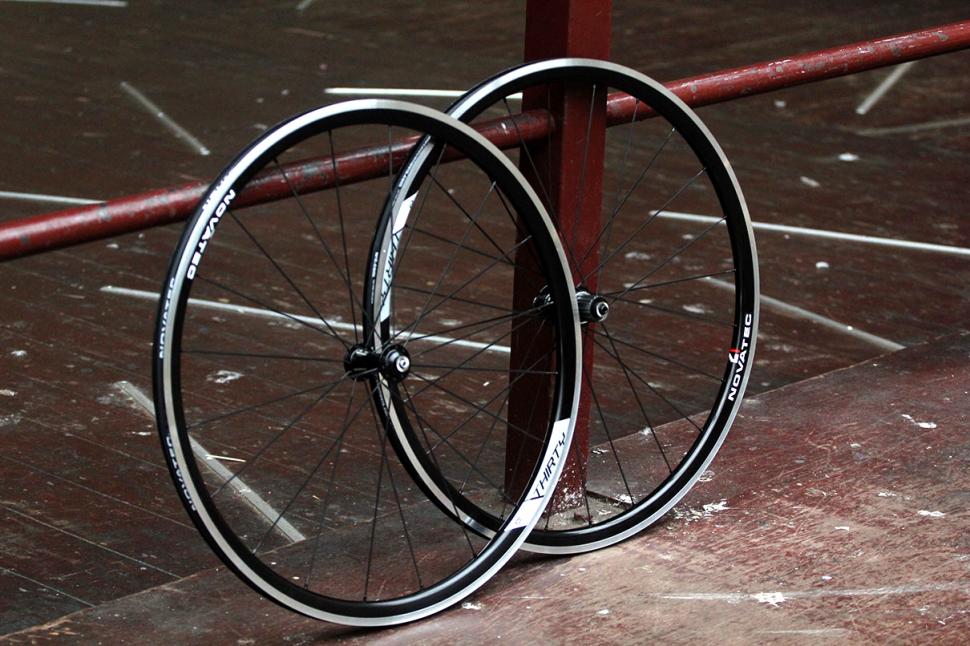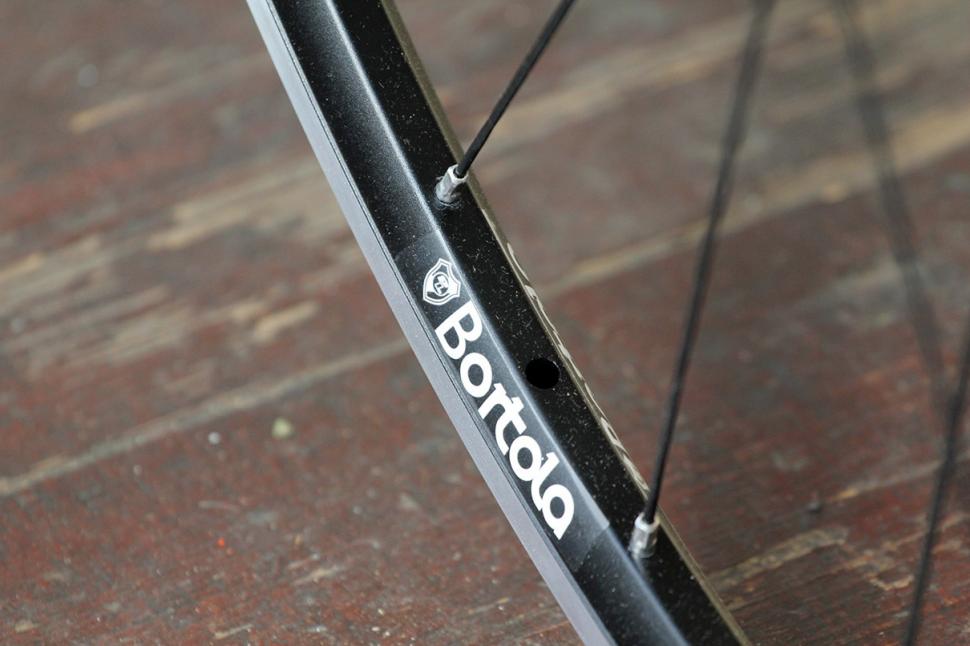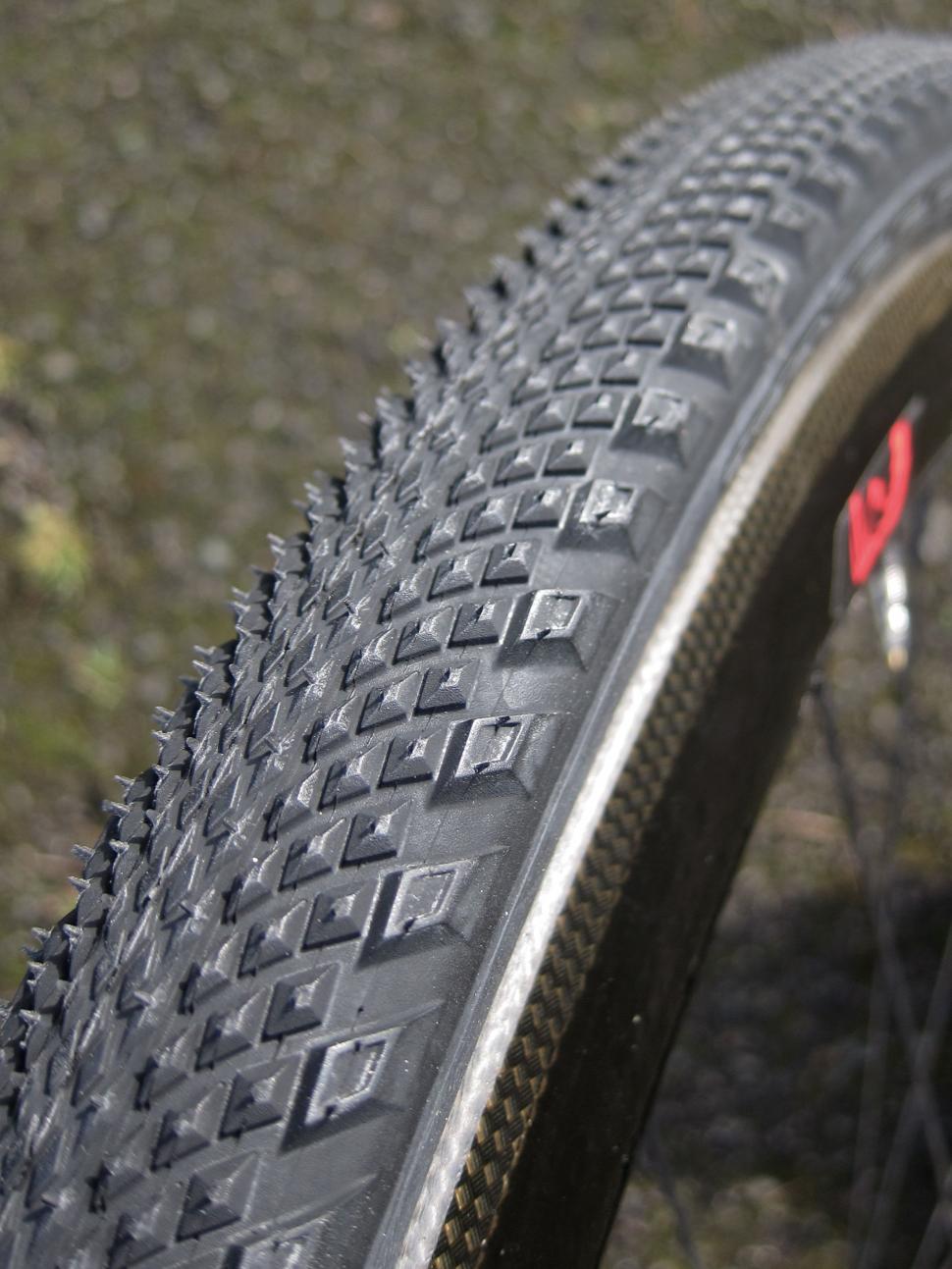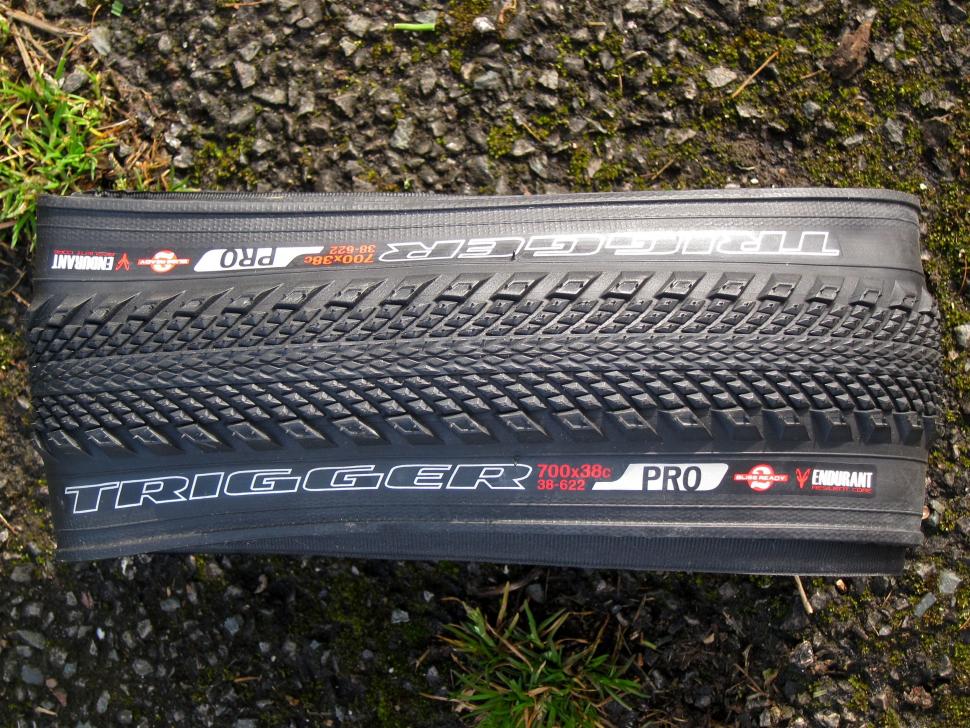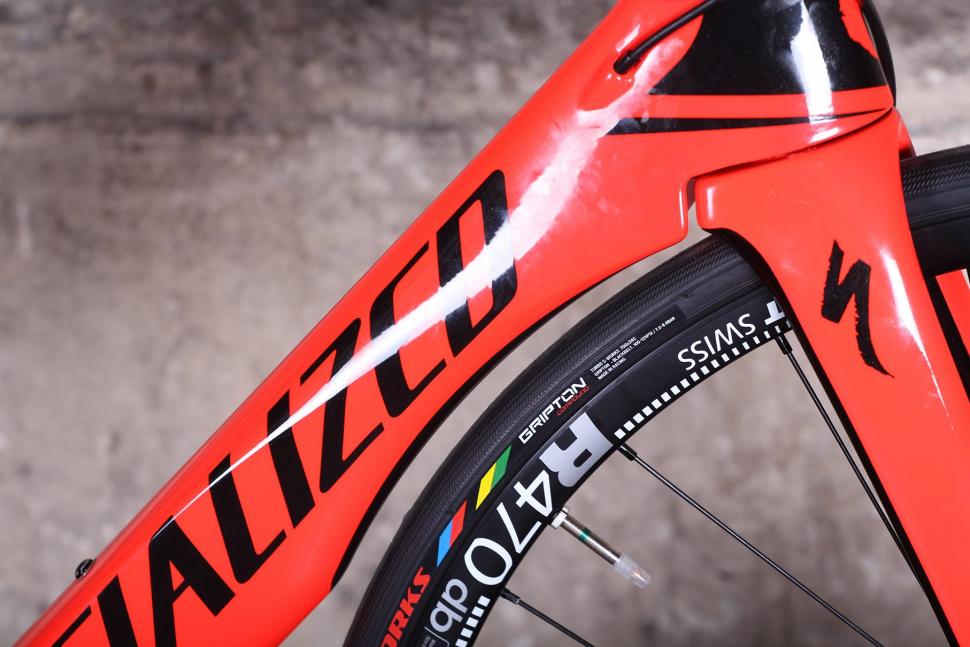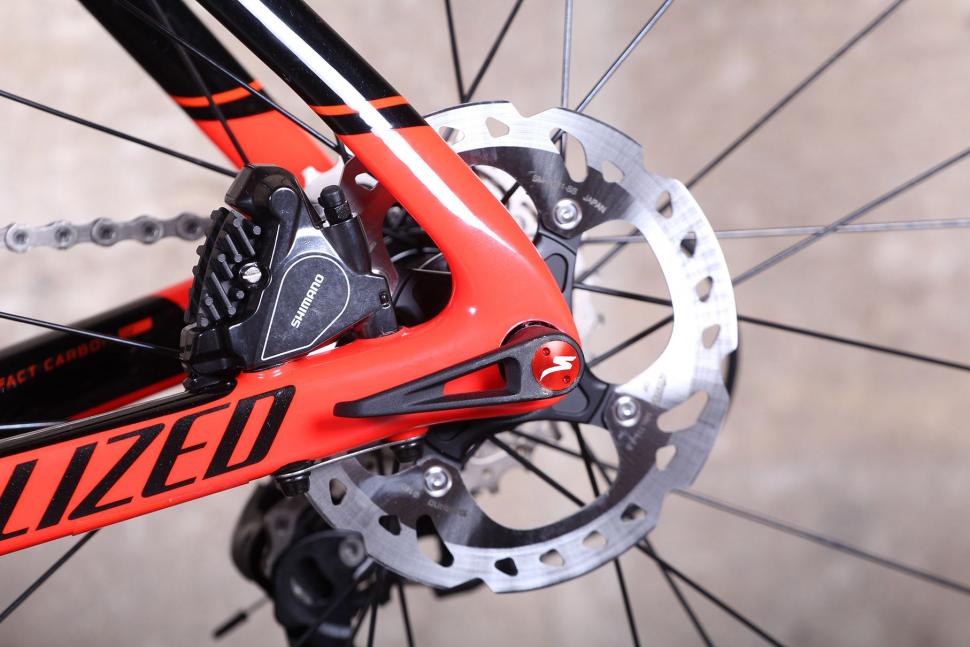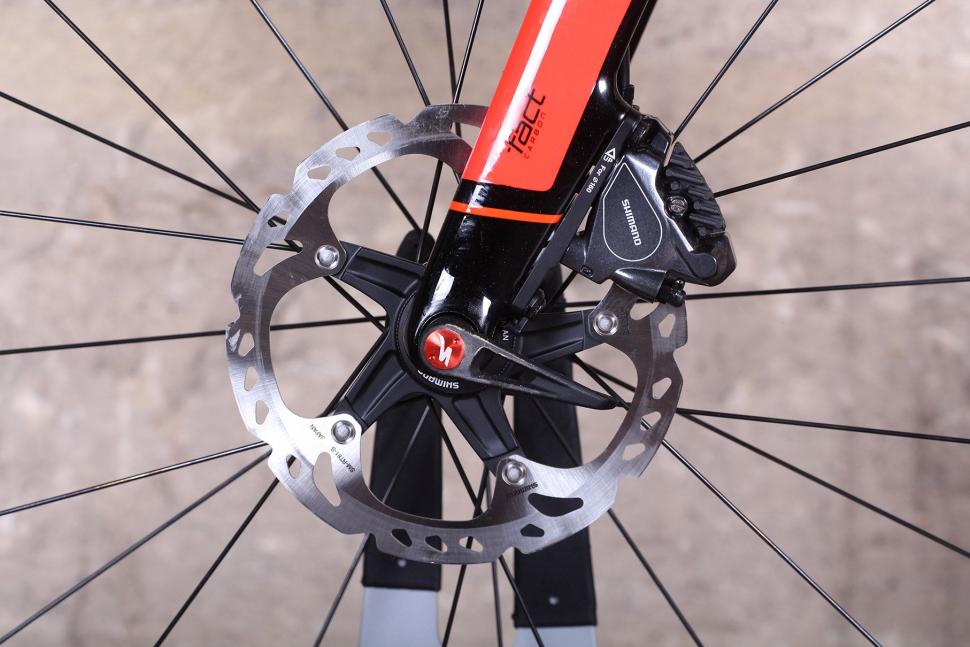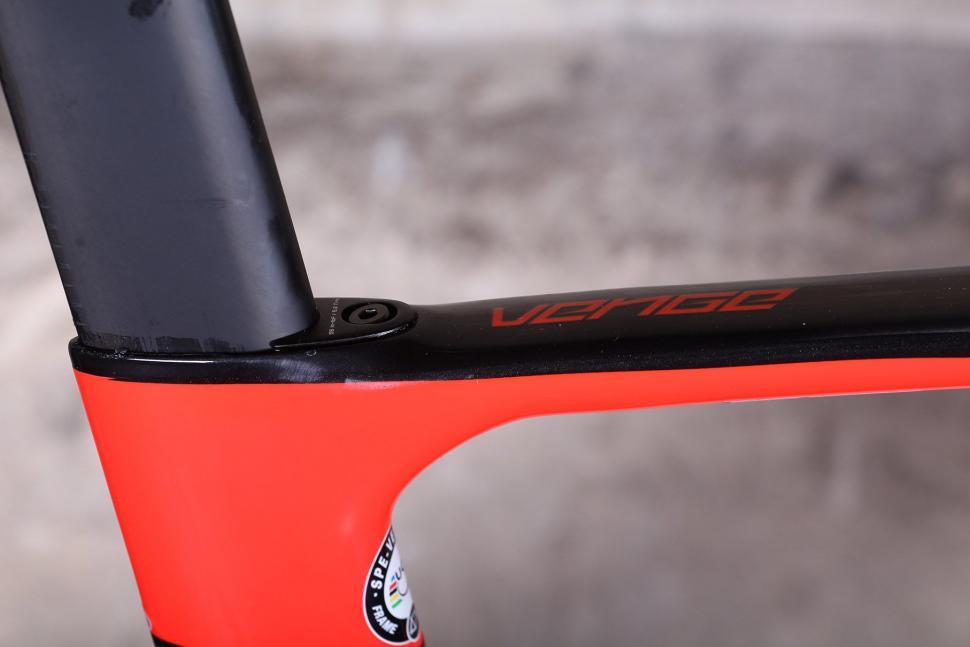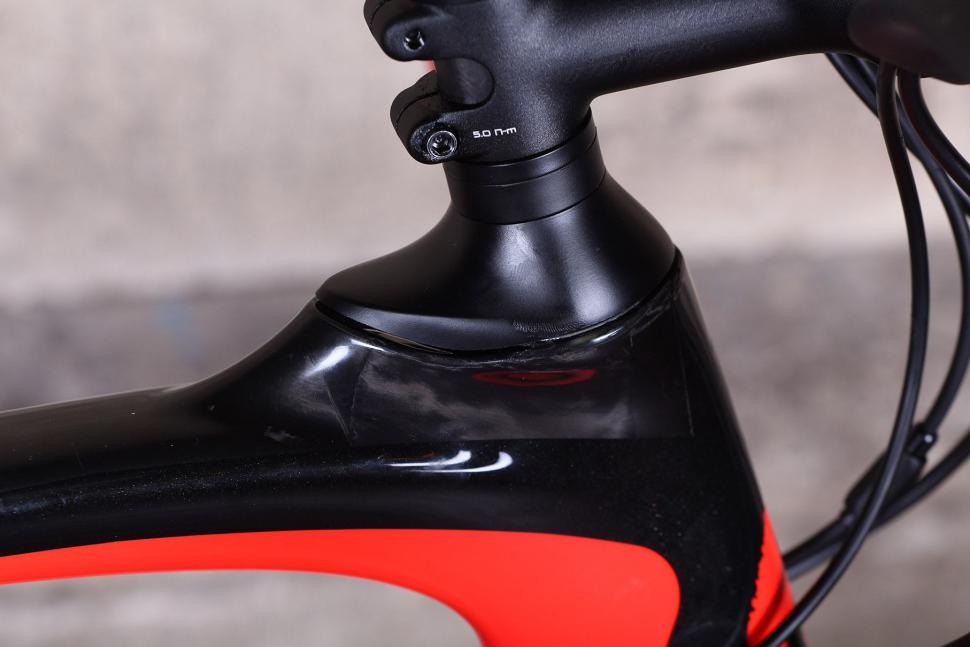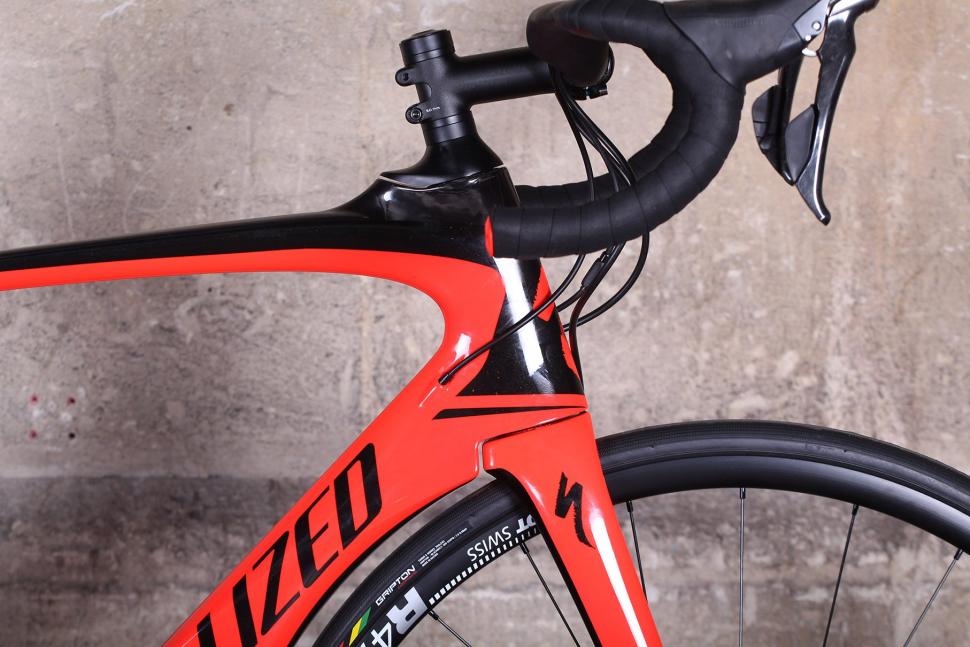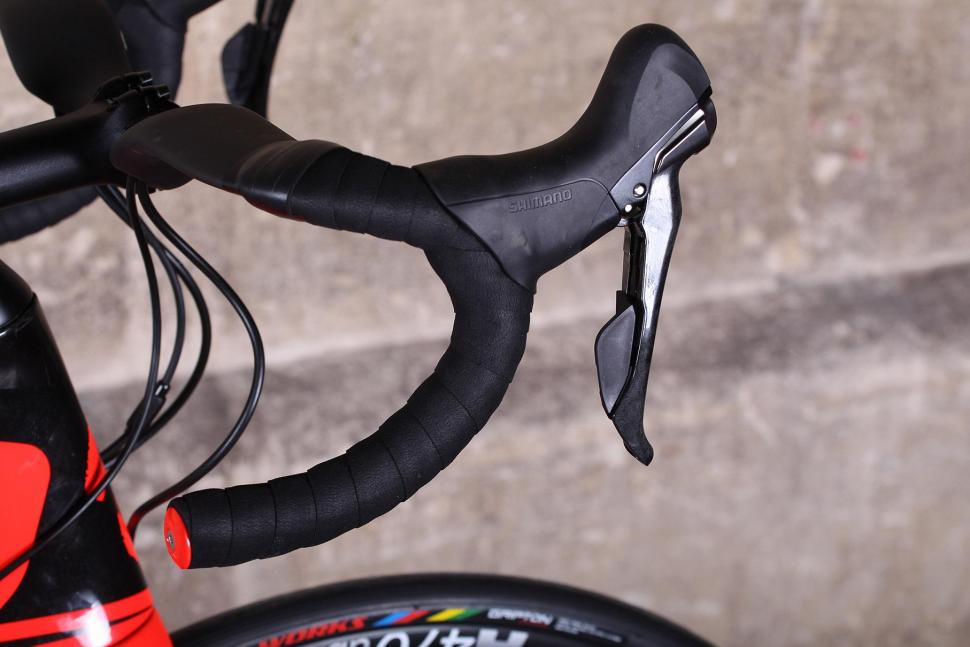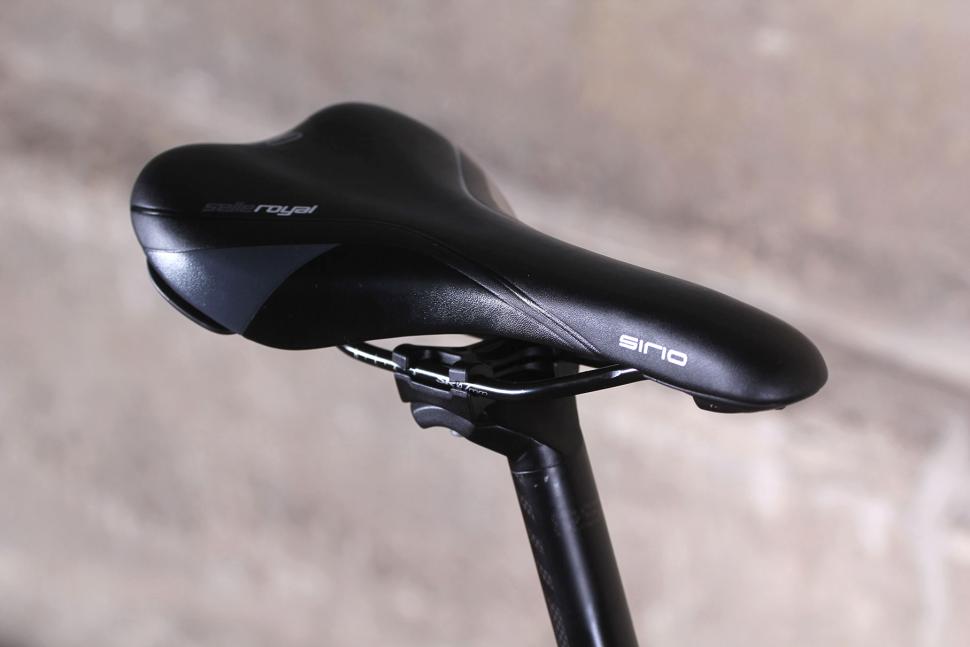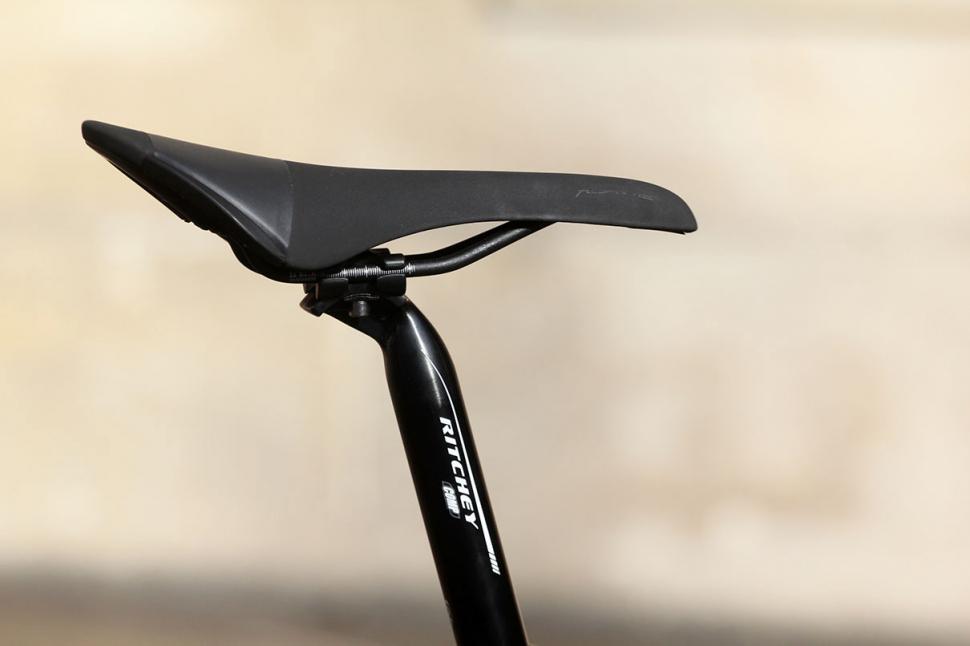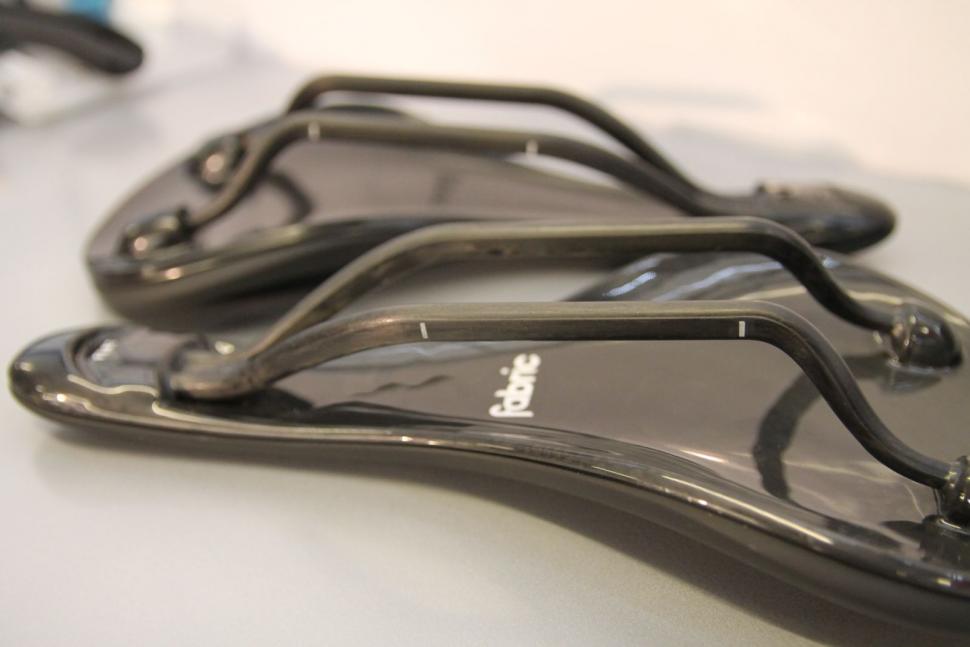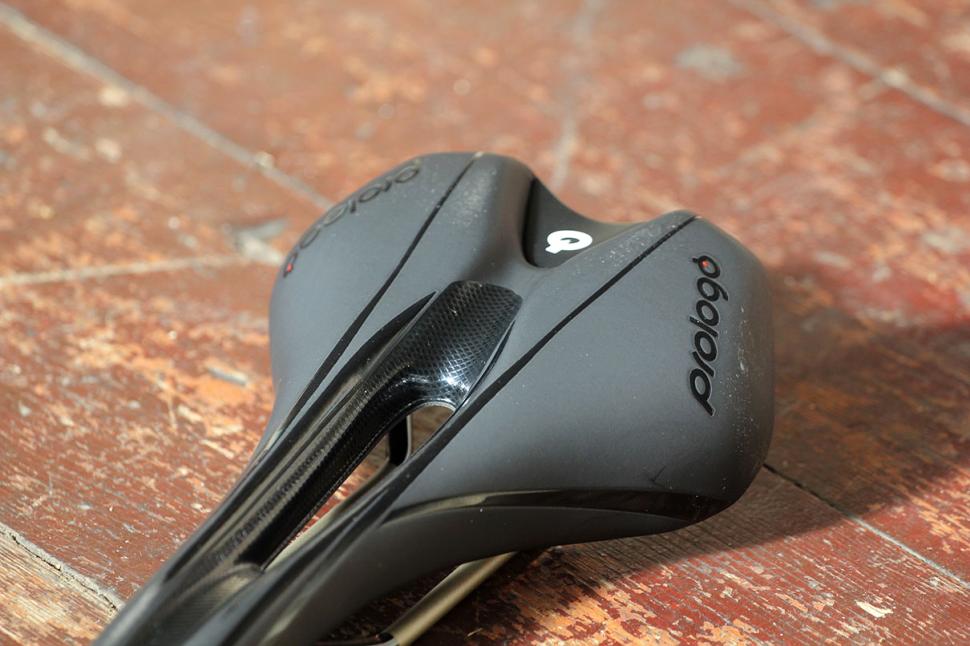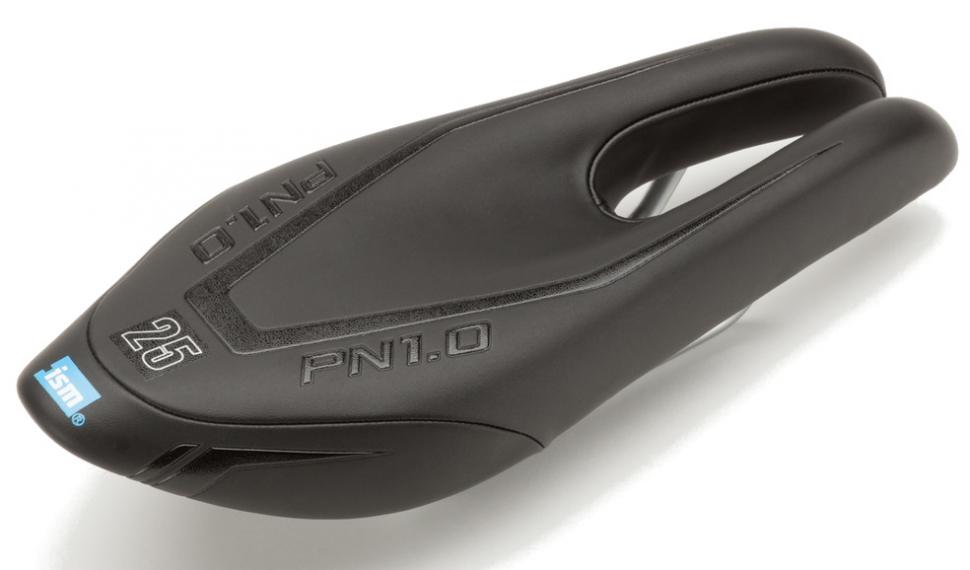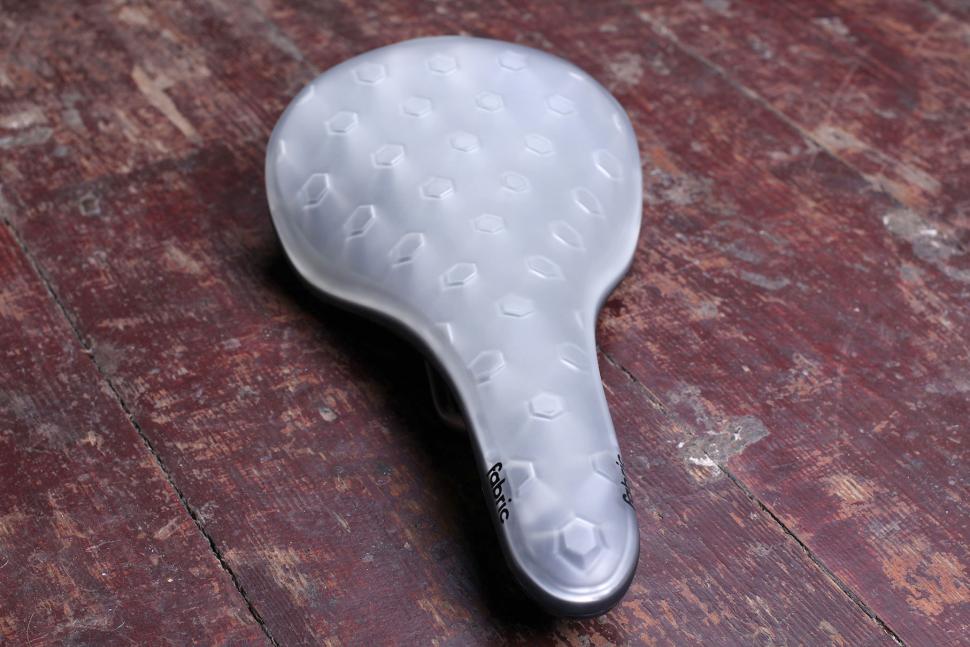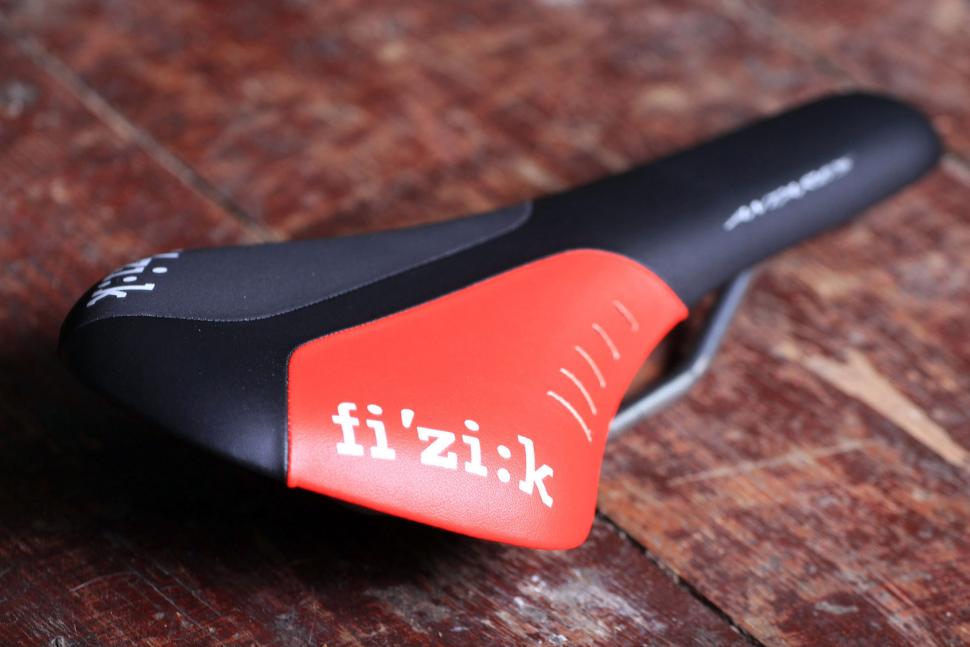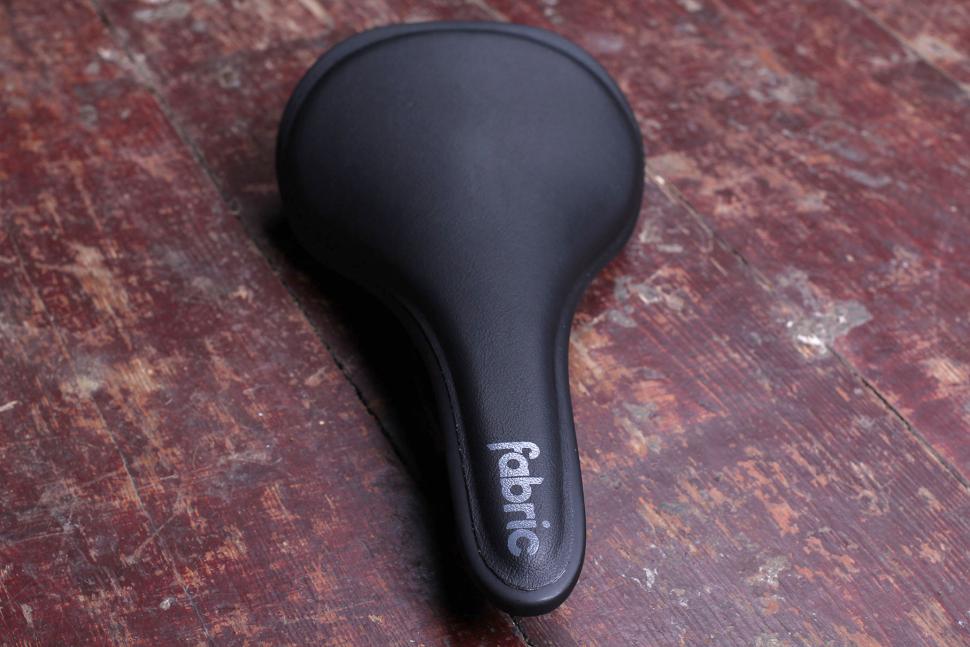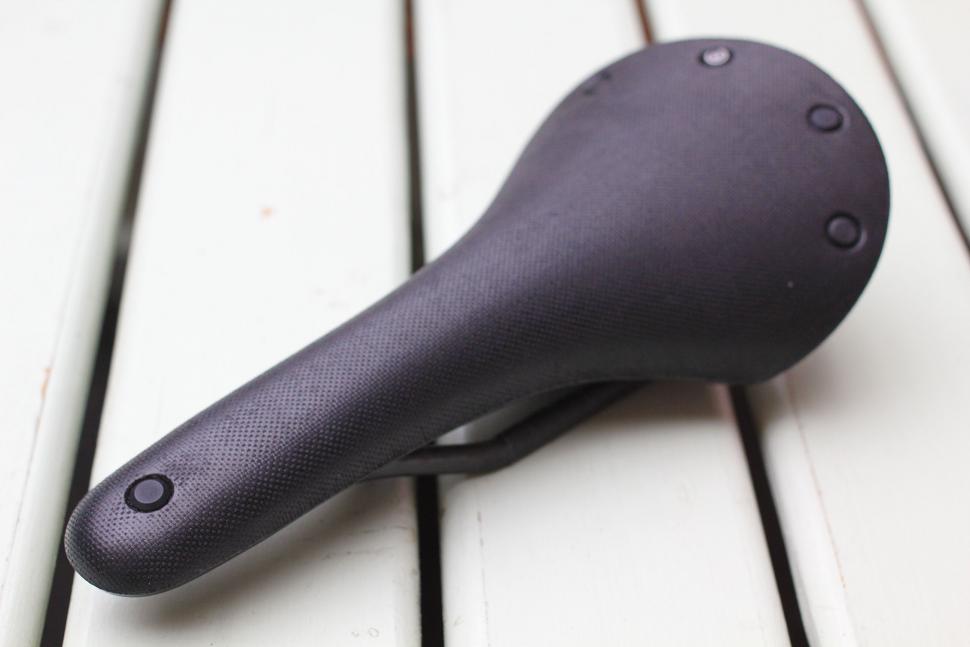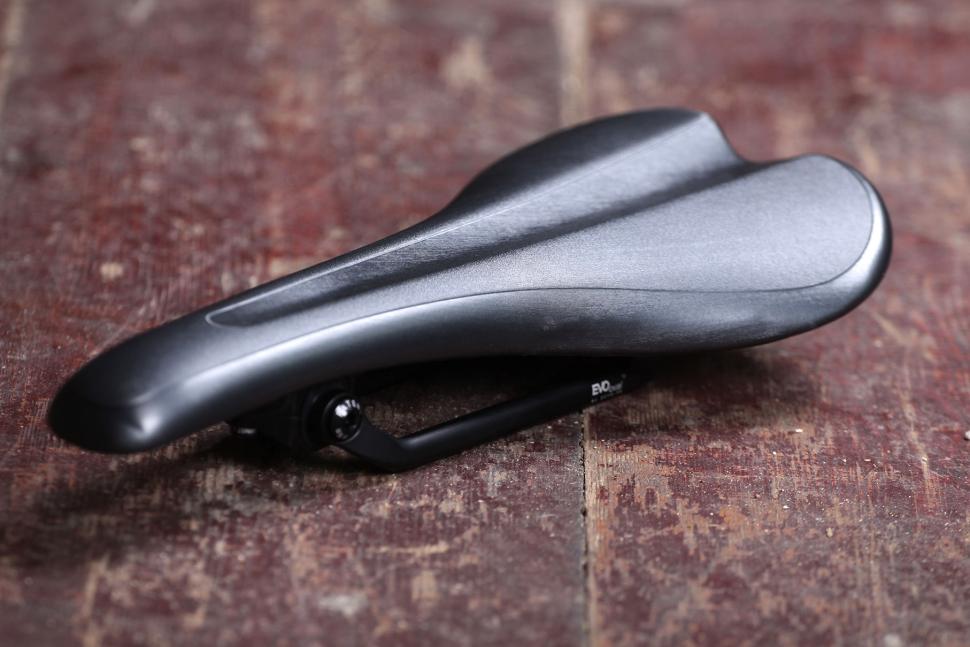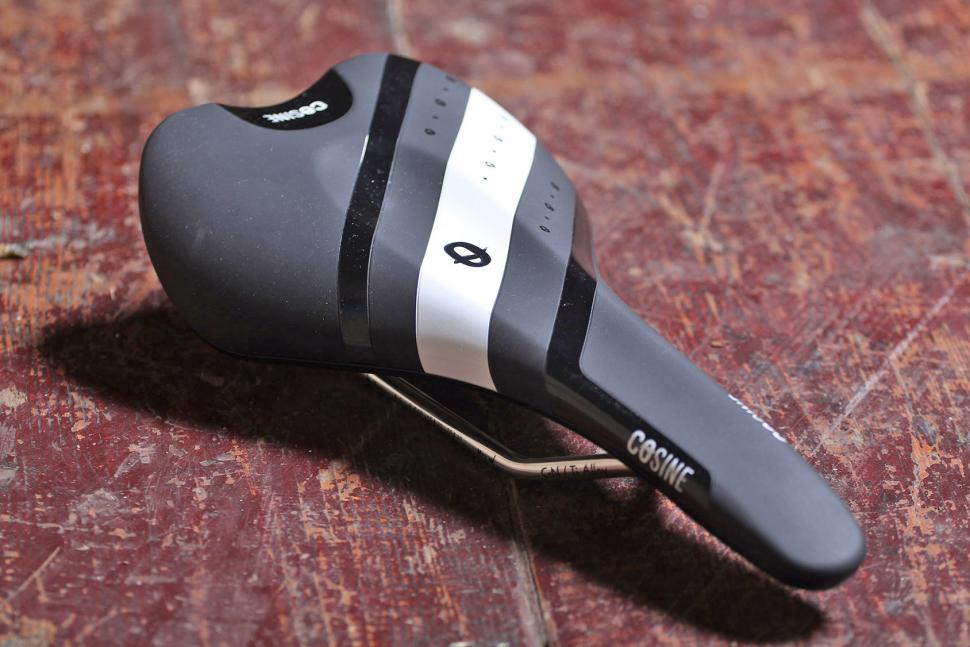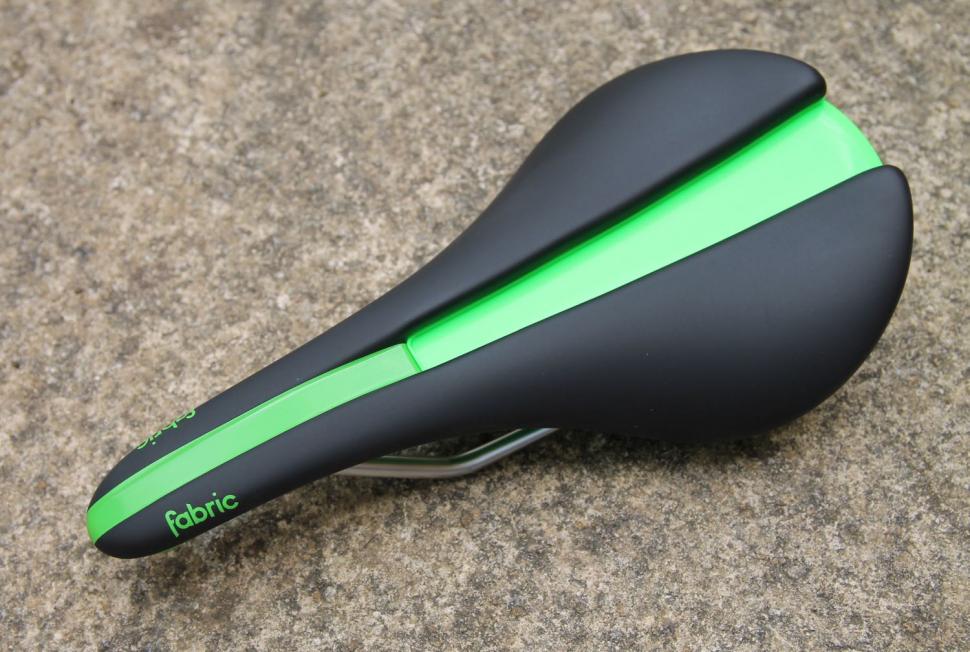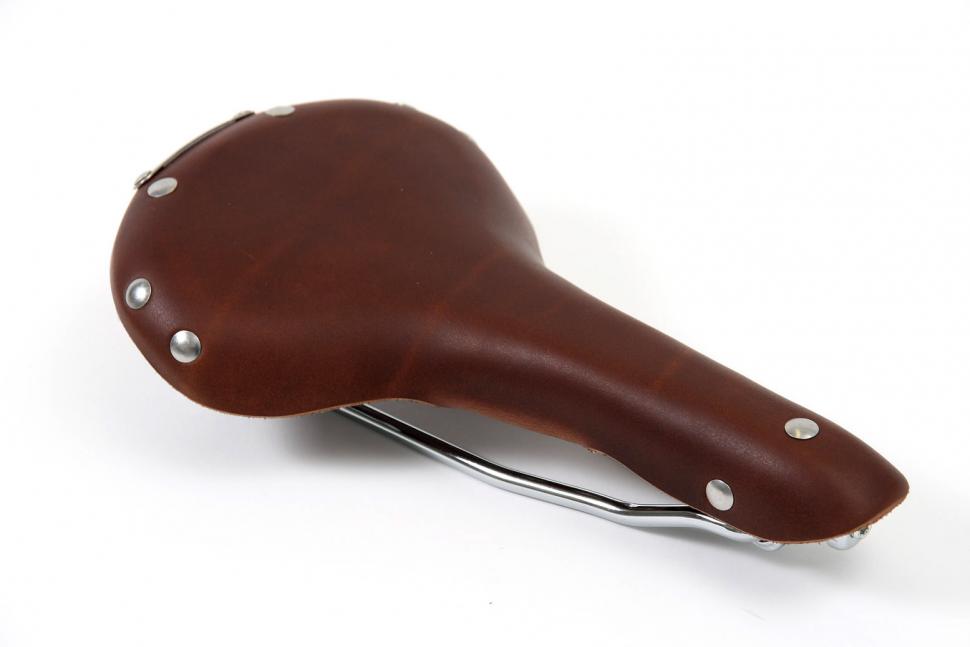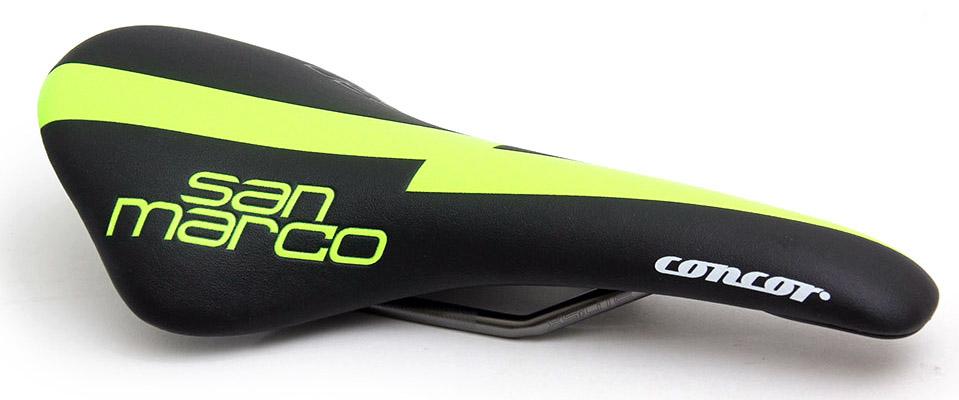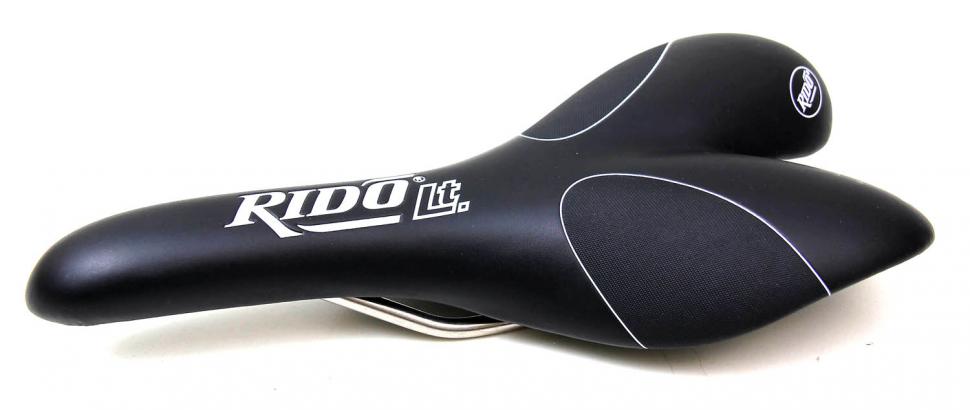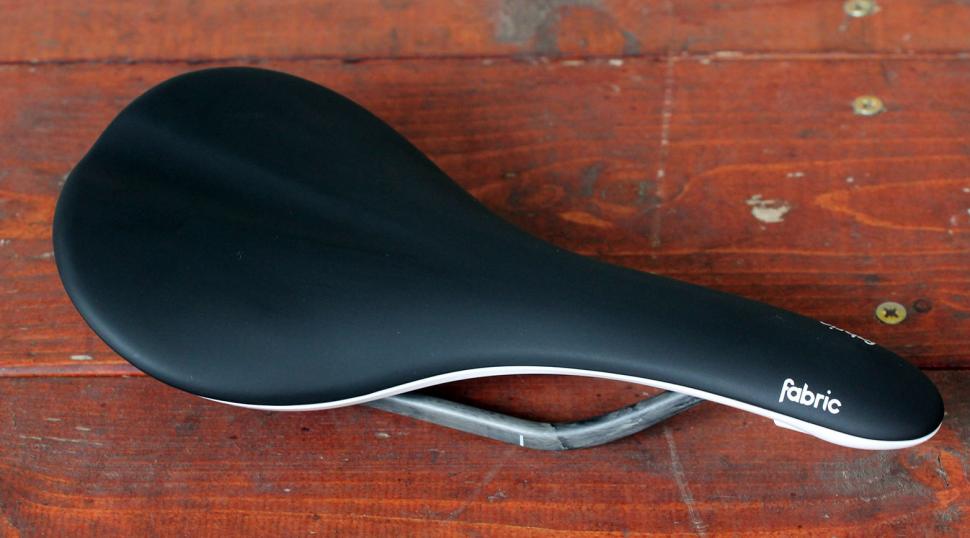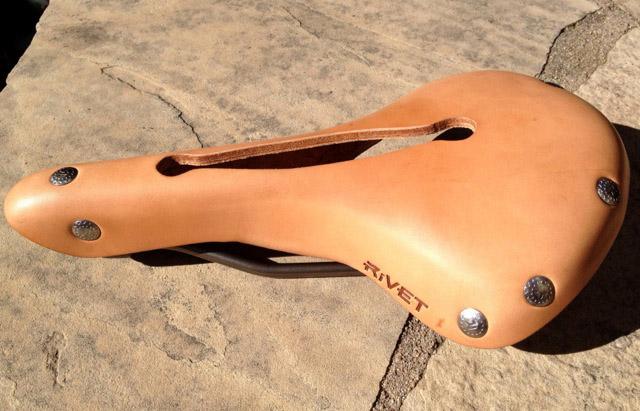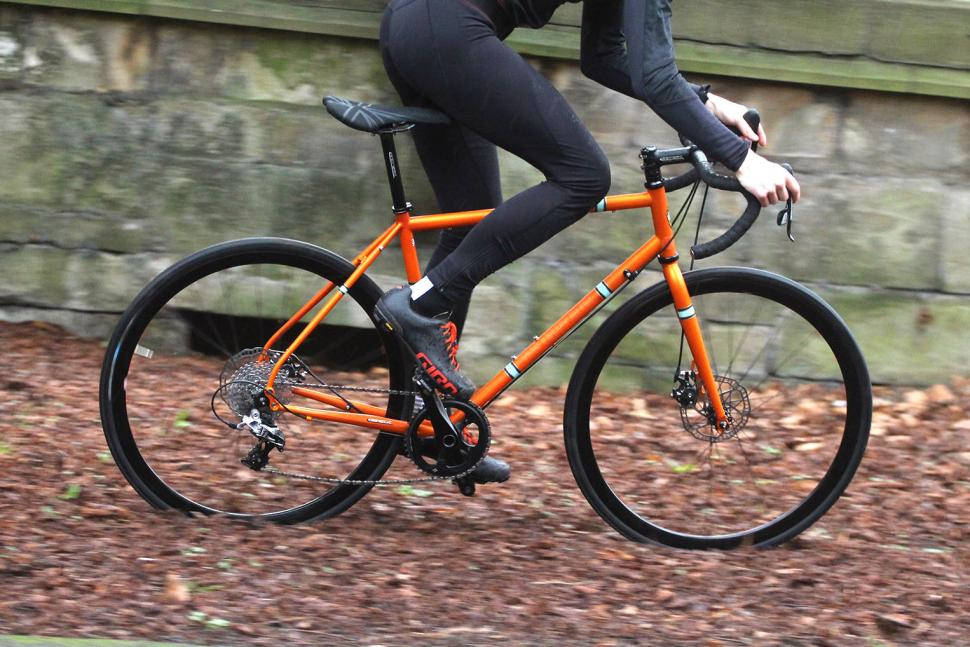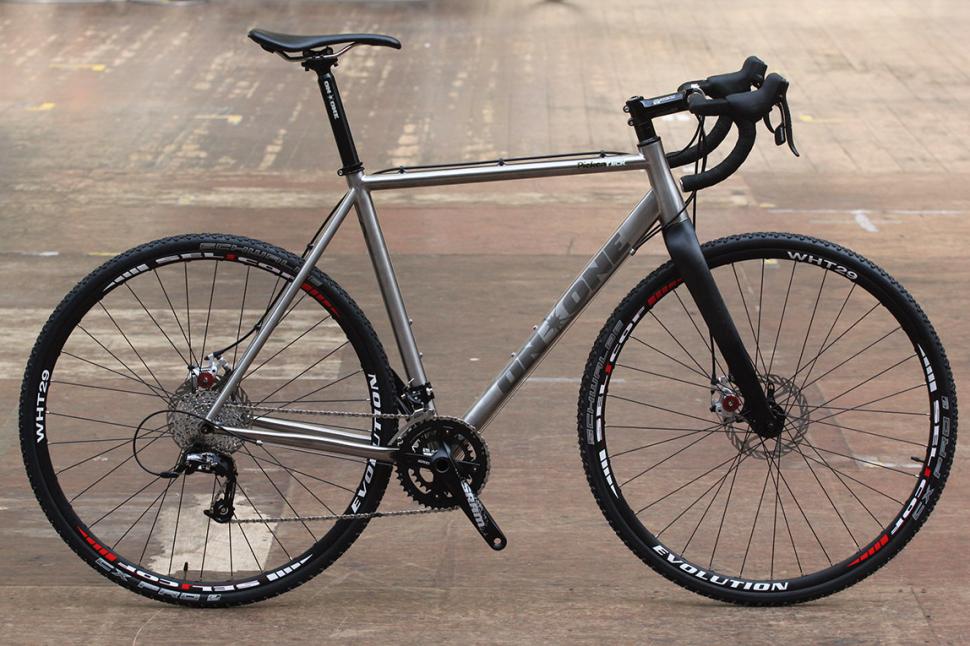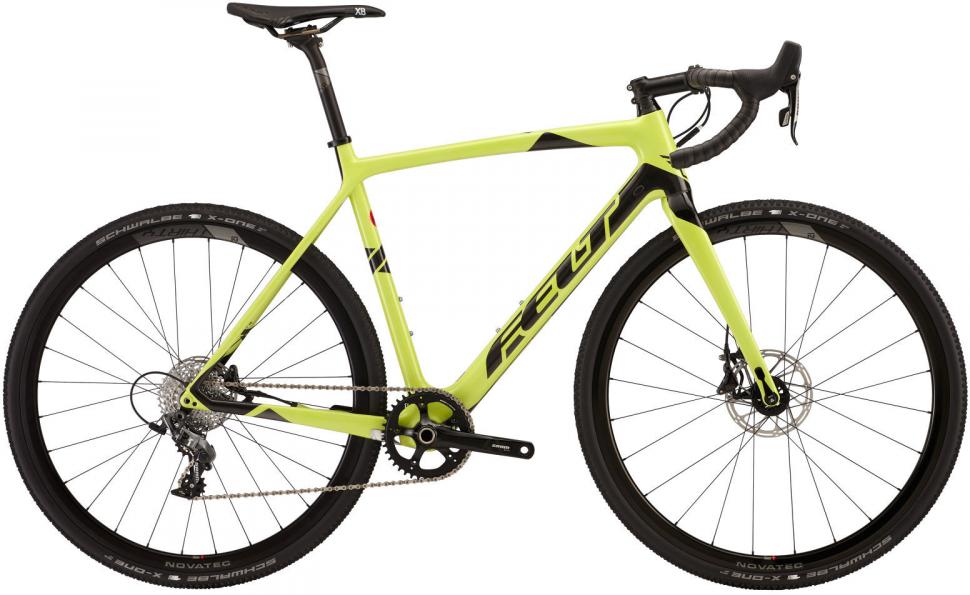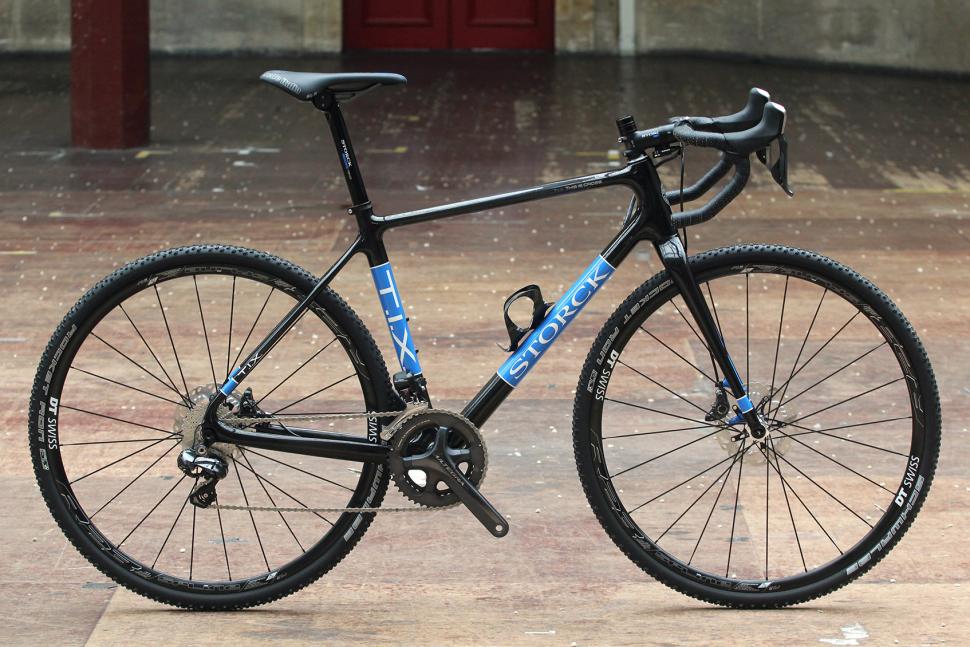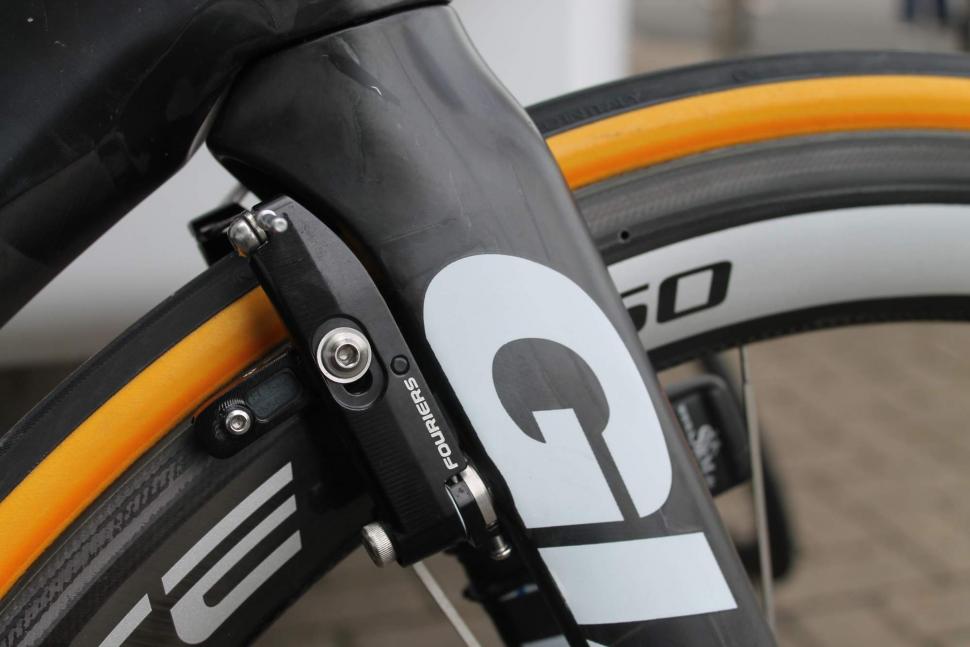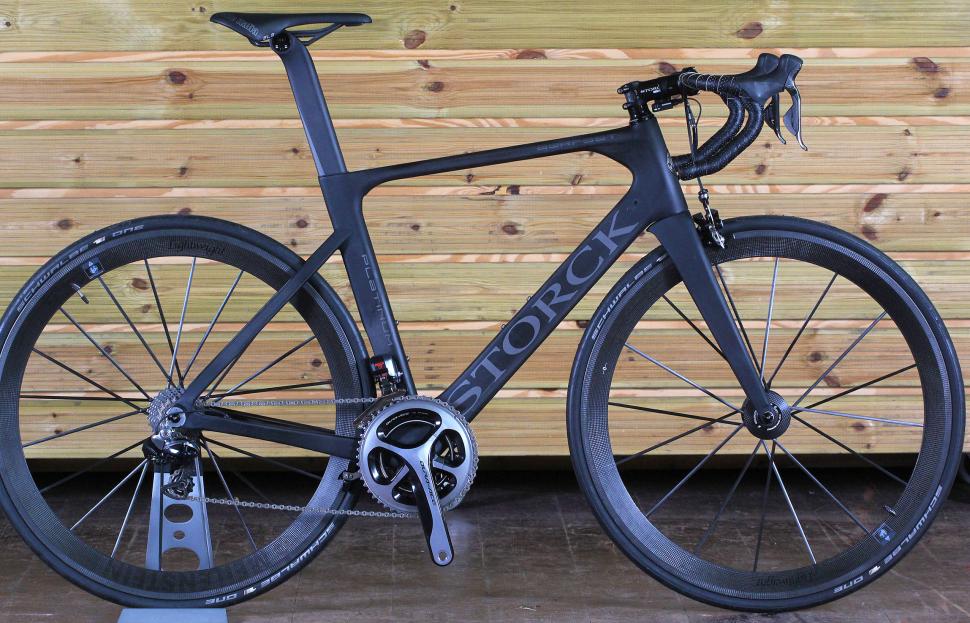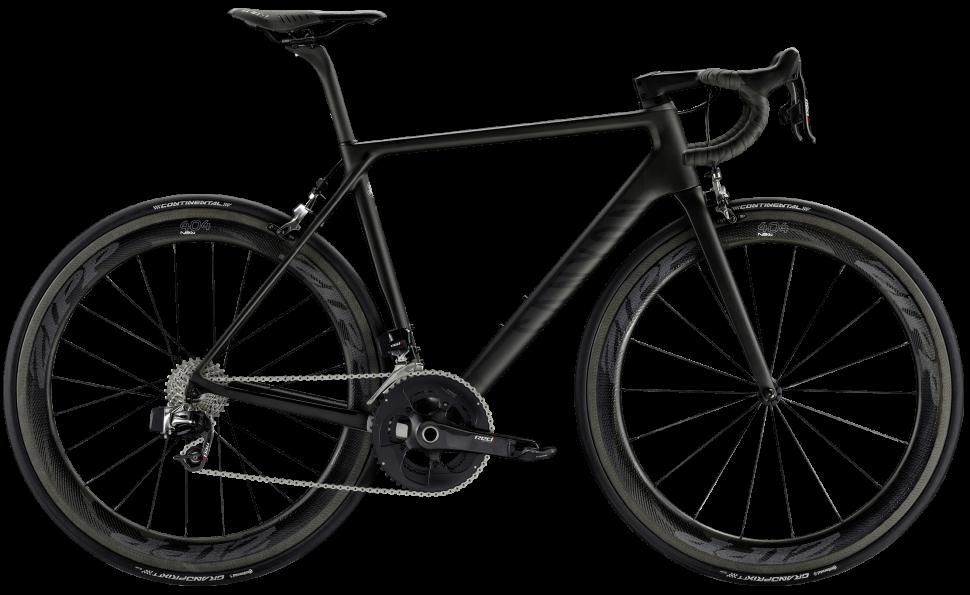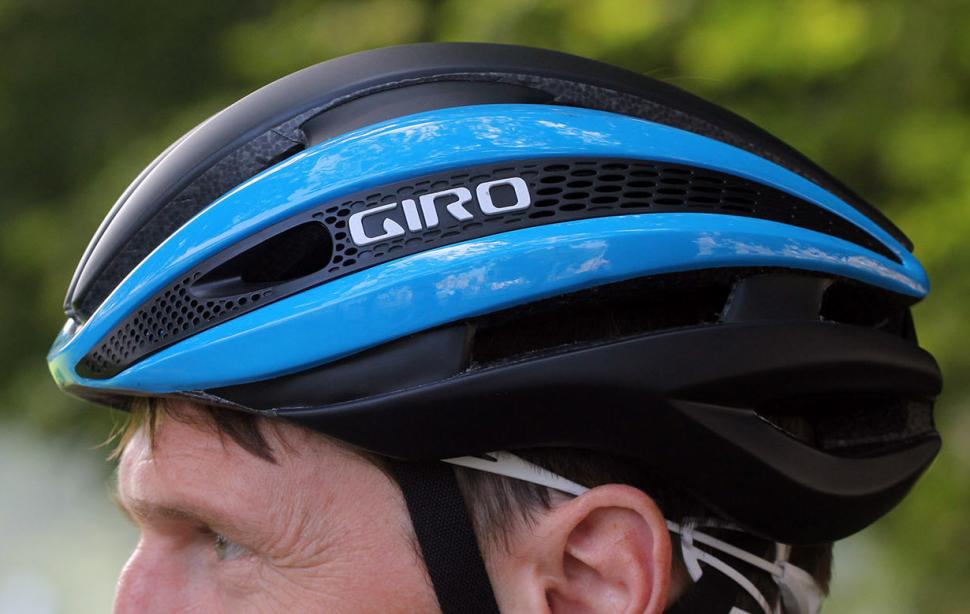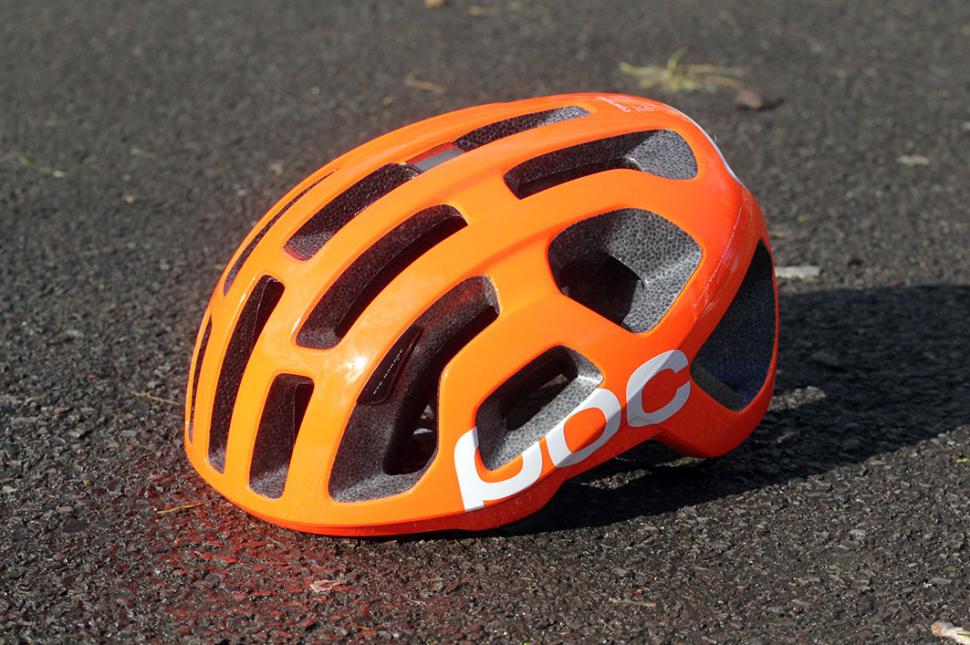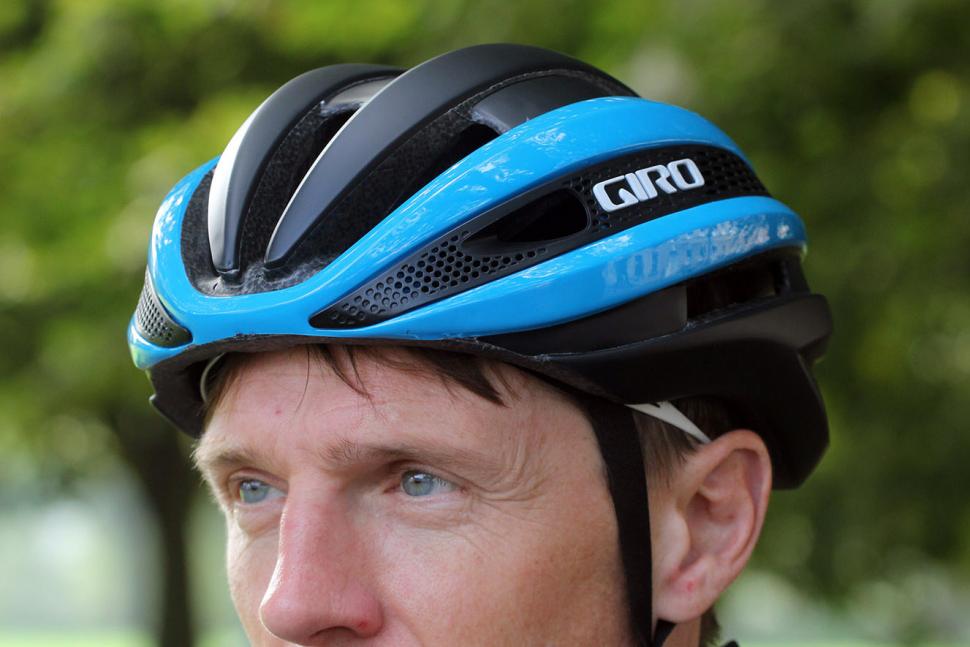Your saddle is arguably the most important component on your bike. Like that other key to comfort, your shorts, if it's doing its job properly you'll never notice it, but if it isn't — ouch! It’s your main contact point with the bicycle, and for some of us even subtle variations between two similar saddle designs can lead to one of them crossing fine line between comfortable perch and instrument of torture.
For a lot of people the saddle they get with their bike works just fine. Every component on a complete bike has to contribute to meeting a price point, but bike manufacturers aren't stupid; they may spec a generic product but it is one designed to work for as many people as possible. And for a lot of us the saddle our bike was born with works just fine.
![Raleigh Mustang Elite - saddle.jpg Raleigh Mustang Elite - saddle.jpg]()
Raleigh Mustang Elite - saddle.jpg
However, if it doesn't or you want to drop some weight from your bike, or pep up its looks with a new saddle you'll need to find the right one. If it ain't broke though you may want to consider whether you really want to fix it before you start looking for another saddle. It's no surprise that pros, couriers, expedition riders — indeed anyone who spends a lot of time on a bike — takes the same favoured saddle from bike to bike. And you don't necessarily need the most high tech saddle to be comfortable or go fast — the Tour de France has been won on £25 saddles.
If you do need a different saddle though you are faced with a bewildering choice. Saddles come in a huge variety of shapes and sizes to suit every type of riding from racing, touring, commuting and leisure cycling.
While this huge choice means there’s a saddle to suit every bum, it does make knowing just where to start a touch tricky when you're faced with a choice of potentially hundreds of saddles. So you need to narrow down your choice to find the perfect saddle, and that's the aim of this guide.
Shape
The critical part of choosing the right saddle is finding a shape that fits your body and suits your riding style. Generally speaking, the more stretched out your riding position and the faster you ride, the narrower the saddle you need. And the more upright your position and the slower you ride, the wider the saddle needs to be. When you're stretched out, you place less weight on the saddle, but when you sit upright, the saddle has to support more of your weight. That's why race bikes have very thin saddles, and Boris bikes have extremely wide saddles.
![Eastway Zener - saddle and post.jpg Eastway Zener - saddle and post.jpg]()
Eastway Zener - saddle and post.jpg
Manufacturers are getting better at helping you to choose the right saddle. Most have their own system of narrowing the choice, either by deciding what type of cyclist you are — usually by your range of flexibility and your position on the bike — or using a fit system that measures the distance between your sit bones, to pair you with the saddle that best matches your anatomy.
A good saddle should support the sit bones, not the entire bum. It’s where your sit bones contact the saddle that is key, a saddle needs to provide adequate support in these two areas. That’s why many saddles are offered in different widths, reflecting the difference in people's anatomy. Some manufacturers offer up to three widths to suit the range of variance. The nose of the saddle supports some of the cyclist’s weight too. Oh, one thing to remember here is that just because you have a bigger bottom it doesn't necessarily follow that you have wider sit bones.
![selle italia slr t1 saddle selle italia slr t1 saddle]()
selle italia slr t1 saddle
Saddle shapes largely fall into several camps. Some are flat, some are rounded, some have scooped backs, some are narrow, others much wider. You can narrow down the choice by deciding what style of riding you do. A saddle that is too wide can lead to chafing, and one too narrow can feel like you’re sitting on a knife.
Generally, thinner saddles with minimal padding are more suited to racers with deep, stretched riding positions, down in the drops and crouched low over the handlebars. Such a position means you’re not sitting with all your weight on the saddle; you actually put very little load on the saddle when riding in such a position.
For touring cyclists saddles with a wider shape are favoured, as you don't adopt such an aggressive position when putting the miles in on tour as you do when racing. For long days in the saddle, and day after day, you need the highest level of comfort possible, and leather saddles are regularly the first choice. They're very durable too, and usually last years longer than saddles made from synthetic foam padding.
For more leisurely riding where an upright position is adopted, more of your weight will be concentrated through the saddle. A wider saddle with more support and extra padding will be the preferred choice here.
You can get saddles aimed at road racing, triathlon, touring, commuting, mountain biking, and they all take different approaches with shapes and padding. This does help narrow down the choice. There are some saddles that are favoured by different groups of cyclists, and there are some that seem to straddle the different camps. The Charge Spoon is one such saddle that leaps to mind as being particularly well suited to British bums, whether road racing, touring or mountain biking.
Material, rails and shell
The type of materials used to construct a saddle range from plastic bases and steel rails on entry-level models to entire moulded carbon fibre bases and rails on the very expensive models. The more you spend, the lighter the materials used, so if weight is a key priority for you, you need to start saving up. Lightweight saddles are those in the 200g region.
![]()
If comfort is important to you, then steer clear of carbon rails as hollow titanium rails can often provide additional flex to absorb some of the vibrations that pass through the frame into the seatpost. We’re even seeing many professional racers choose these saddles over the very top-end models.
The base of the saddle is an area where a manufacturer can design in extra flex, to allow the saddle to subtly deform upon impacts. Some have holes or different materials in key places that allow the foam to expand through the hole, or the base to flex in a controlled manner.
The saddle cover can be made from synthetic leather like Lorica or real leather, and there’s many other materials manufacturers might use. Some add perforations and Kevlar edges to prevent wear and tear taking its toll. Time trial saddles often have a grippy material along the nose to stop the cyclist slipping back and forth, and we’re starting to see such materials make a presence on road saddles, as with Prologo’s CPC saddle.
![]()
Leather saddles have a single piece of leather that is tensioned on a metal frame, so it’s essentially suspended like a hammock, and provides plenty of give that can prove very comfortable on longer rides. They need more looking after than regular saddles, and sometimes need breaking in. The leather needs proofing, and you need to be careful in wet weather, as they don’t much like the rain; that's why you most often find them on mudguard-equipped touring bicycles. Brooks is the name most associated with leather saddles but they aren't the only maker out there. Spa Cycles do a well regarded, and well priced, range of leather saddles that possibly require more breaking in than a Brooks, but not that much more.
A fascinating recent development is the Brooks Cambium range of saddles, which use similar construction techniques to Brooks' leather saddles, but with modern materials. Instead of a sheet of leather across the ends of the rails, Brooks has come up with a combination of vulcanised natural rubber, cotton canvas and structural textile for the top.
This top is inherently flexible, like a worn leather Brooks or a new one with the tension backed off slightly, and it moves slightly as you pedal. It's a design we like a lot.
Padding and cutouts
Most saddles use some form of foam padding, but the amount of padding used and the density can vary a lot. Racier saddles often have less padding, while saddles for commuting and leisure cyclists will have deeper and softer padding, to cushion the ride. However if you ride fast, or for long distances too much padding might not be your friend as it can move, pinch or chafe rather than supporting your sit bones.
It’s easy to think a saddle with very firm padding is going to be uncomfortable, but once you get used to them they can be a lot more comfortable than softly cushioned saddles for riding of the fast variety. Because you lean forward, you perch on the saddle rather than sit on it, so you can get away with less padding. Strategically placed gel inserts are another frequent solution to providing comfort.
![Prologo Kappa DEA2 Saddle Detail Prologo Kappa DEA2 Saddle Detail]()
Prologo Kappa DEA2 Saddle Detail
In 1997 a study by Dr. Irwin Goldstein put the cat among the pigeons, claiming reduced blood flow cause by saddle pressure could lead to erectile disfunction in men and cause permanent reproductive failure. A load of nonsense it may be, but the story produced a lot of concern, and the saddle with the hole in the middle suddenly became very popular. Step forward Specialized in 1998 who produced their first Body Geometry saddle, with a cutaway channel claimed to restore the blood flow and so prevent numbness.
In fact the idea is not new. The first saddle with a hole was actually born as early as 1903, and Georgena Terry produced the first modern example for women in 1992. It also has to be said that the claims for saddles with channels in them are hedged with all sorts of caveats.
For instance there is no agreement that decreased blood flow, or even numbness will cause erectile dysfunction in men or genital numbness in women. And even proponents of channels and holes agree that there is another simple cure: stand up and any decreased blood flow to your bits will immediately resolve itself.
Even if decreased blood flow does cause a problem depending how you are plumbed down there the amount of difference between a normal saddle and one with a channel may be minimal to non-existent. In the interests of science our editor Tony once had his organ wired up to measure the difference in blood flow between his usual saddle and one with a channel in it. For him at least it turned out there was no difference.
So cutaways and channels are not for everyone. You only need look at the bikes of the professionals to see that many quite happily cycle many thousands of kilometres a year with little side effect, so there’s a lot more to comfort than just adding the channel. They do work for some people though, indeed some swear by them. It’s a case of trying different saddles and seeing what works for you.
If you have particular urological or prostate problems it may well be worth looking at a saddle with a hole or channel or cutaway, and there are plenty to choose from. Or you might even take things a stage further and looking at something with a drop nose, like a Selle SMP or even a noseless saddle like the ISM Adamo Racing saddle pictured above,
Saddle padding doesn't last forever, particularly on performance saddles. After a while the padding isn't really doing any padding anymore because it has become permanently squashed by the millions of times your bottom has compressed it. The more performance-oriented a saddle and the less actual padding it has, the more time limited its lifespan. Many top end performance saddles have an expected lifespan of a couple of seasons if used the way they are intended.
Saddles for women
Most manufacturers now have a large choice of women-specific saddles to recognise the differences in anatomy. Many women do get on just fine with men's saddles, just as many women happily ride men's bikes, but generally women have wider sit bones so there’s a choice of suitable wider saddles to suit. That said, looking at some saddle ranges, there’s still a much smaller choice for women than men, something which needs addressing.
Georgena Terry developed a reputation for comfortable saddles aimed specifically at women, in doing so pioneering the first women’s specific designed products. She produced a saddle for women in 1992 with a cutaway section, a design she later expanded to men’s saddles.
Try before you buy
Ideally, you want to try a saddle on your bike before parting with your money, and a few saddle manufacturers recognise the problem of spending a lot of cash on an untested saddle. Some then offer try before you buy schemes, where you can run a saddle for a desired amount of time to decide if it’s right for you. That can save you collecting a large pile of saddles in your shed as you enter the quest for the ultimate saddle.
Saddle height and bike fit
As important as picking the right saddle, ensuring you have the saddle at the correct height and distance from the handlebars is also very important. Sometimes, you can have the right saddle, but you’re not sitting on it correctly, which can be a case of it being too far forward or backwards. If you find yourself wriggling about on your saddle a lot when riding, it could be a sign it’s not correctly positioned.
We’d recommend getting a professional bike fit, and there are many available these days. They’ll assess your level of flexibility, physical limitations and your cycling goals, and ensure you’re correctly fitted on the bike. The bike needs to fit you, not the body fitting the bike.
17 great saddle choices
![Fabric Cell Radius Elite.jpg Fabric Cell Radius Elite.jpg]()
Fabric Cell Radius Elite.jpg
The Fabric Cell Radius Elite is basically the result of someone saying “look at my trainers – wouldn't it be comfortable to sit on something like that?” It's a wide and rather novel-looking design where the entire upper section is effectively a big air pocket, given some reinforcement with internal flexible hexagonal structures. It works pretty well, too, providing a lot of isolation from bumpy roads and trails.
Rhe Cell is cush incarnate. The first impression is of a really compliant saddle, with that huge Nike-Air-esque air cell yielding dramatically under thumb. Seated on it, with your weight spread over a larger area, that impression changes a little, and it feels comfortable but not indecently squishy.
Read our review of the Fabric Cell Radius Elite
Find a Fabric dealer
![Fizik Antares R5 Kium Road Saddle.jpg Fizik Antares R5 Kium Road Saddle.jpg]()
Fizik Antares R5 Kium Road Saddle.jpg
Fizik's Antares R5 Kium Road Saddle is surprisingly comfortable for speed-orientated road riding, and the build quality is top-notch.
The Antares R5 sits in Fizik's Chameleon family of contact points. This is the mid-point of a three-category range created according to different levels of rider flexibility, which also includes handlebars (the other two are Snake/flexible and Bull/rigid). It's 275mm long and 142mm wide and Fizik describes its shape as 'wide and slightly curved in profile, which is ideal for riders with medium spine flexibility'.
Read our review of the Fizik's Antares R5 Kium
Find a fizik dealer
Fabric's ALM Ultimate saddle is an extremely lightweight saddle that's beautifully made. It's best suited to those who like a firm feel and don't mind paying a premium price.
When your bum forst encounters the ALM it's a little surprising just how firm it feels. The 'ultra-light PU foam' padding is quite thin and there's not masses of give in the 'aerospace UD carbon fibre' base or the carbon-fibre rails. Don't get us wrong, it's not solid, but it isn't soft either.
Read our review of the Fabric ALM Ultimate
Find a Fabric dealer
![Brooks Cambium C13 carbon saddle.jpg Brooks Cambium C13 carbon saddle.jpg]()
Brooks Cambium C13 carbon saddle.jpg
The Brooks Cambium C13 is the latest model in the English brand's excursion into non-traditional materials for its saddles. There's no leather or chromed steel at all here, replaced by the vulcanised natural rubber and cotton top surface previously seen in the original Cambium models, and – what's this? – a full carbon fibre structure underneath. It's very well made (in Italy, not Birmingham, unlike the majority of the range) and there's no breaking-in period, unlike the leather models.
Read our review of the Brooks Cambium C13
A supremely comfortable saddle with innovative shock absorption built in, the Morgaw Trian is designed for comfort, and our tester thought it perhaps the most comfortable saddle he had ever used. It seems that the shock absorbers are what have really made it comfortable. Morgaw is a saddle company from Slovakia that began as a crowd funding campaign on Indiegogo. The idea behind it came from Martin Moravcik and Slawek Gawlik, two ex-pro mountain bikers who wanted to make a new kind of saddle.
Rather than simply having the rails mounted onto the base of the saddle, they mount through shock absorbers in order to lessen the impact of bumps in the road. It is meant to protect your spine as this is naturally where the shocks radiate.
Read our review of the Morgaw Trian
![Cosine Ti Sprint Road Saddle.jpg Cosine Ti Sprint Road Saddle.jpg]()
Cosine Ti Sprint Road Saddle.jpg
Wiggle brand Cosine's range of saddles features four men's and two women's models for a variety of disciplines. This, the Ti Sprint Road Saddle, could be classed as the most extreme, with racing in mind. If that's what you're looking for, it's very good; just bear in mind it's not for long endurance rides.
The design of the saddle is optimised specifically for those riding in a tucked aerodynamic position. The 140mm-wide flat body, with a long relief channel, helps to distribute your weight evenly on your sit bones rather than on any soft tissue. The narrow nose will stop your inner thighs from rubbing against the saddle during a pedal stroke; that seemed to work, although it's safe to say my climbing-sized thighs have never had much of a problem with that anyway.
Read our review of the Cosine Ti Sprint
Proof that you don't have to spend a fortune to get a comfortable saddle, for just £40 this is a super-comfortable performance saddle with pressure-relieving channel.
It's based on Charge's popular Scoop but the foam padding is partitioned down the middle. The unique construction method means Fabric has been able to retain a full base, so you're protected from road spray (many saddles have a hole) and no reinforcement is needed of the foam padding, which means it can be lighter.
Read our review of the Fabric Line Elite
![Spa Cycles Aire Leather Saddle Spa Cycles Aire Leather Saddle]()
Spa Cycles Aire Leather Saddle
If the three-figure price of a Brooks Swift is a bit rich for your blood, this very similar own-brand seat from Harrogate touring specialist Spa Cycles is a very acceptable substitute. It's made from thick Australian leather with shiny chromed steel rails; very handsome.
Our tester found it comfortable even for 15-hour rides. For hard-core randonneurs on a budget or leather saddle virgins who want to try one without breaking the bank the Aire is just about perfect.
Read our review of the Spa Cycles Aire
![Selle Italia Diva Gel Flow saddle Selle Italia Diva Gel Flow saddle]()
Selle Italia Diva Gel Flow saddle
The Selle Italia Diva Gel Flow saddle is one of the most widely rider-recommended women's saddles and it's easy to see why. It's comfortable, flexible, light and it even looks good too.
This is a superior quality design offering superb comfort for all styles of bike and ride. An excellent women's saddle.
Read our review of the Selle Italia Diva Gel Flow
Find a Selle Italia dealer
![Selle San Marco Concor Racing Fluoro Flash Edition 2.jpg Selle San Marco Concor Racing Fluoro Flash Edition 2.jpg]()
Selle San Marco Concor Racing Fluoro Flash Edition 2.jpg
A classic design from the late 1970s, the Selle San Marco Concor Racing is a firm, light, racing-orientated saddle with an optional touch of dayglo flair.
The Selle San Marco Concor saddle is firm enough to provide a solid power base but offers enough flex to provide comfort and stability even on the longest of rides. It's a well made, supportive ride at a reasonable price.
Read our review of the Selle San Marco Concor Racing
Find a Selle San Marco dealer
The Rido R-Lt saddle is a reasonably lightweight performance choice that's built specifically to avoid numbness. This is a brilliant saddle. It does what Rido claim with regards to comfort plus the shape and fit are spot on. It is low profile enough to be taken seriously as a race saddle and at only 230g it isn't going to add any unnecessary weight to your race bike.
Read our review of the Rido R-Lt
Find a Rido dealer
![]()
The Monocoque Carbon saddle from Genetic is just that: a saddle made mainly from carbon. It's light and comfortable, and not cheap, but it compares well against similar saddles from other manufacturers.
For many road cyclists, especially those doing longer distances, it's not about just weight, nor just price. It's about the best combination of weight, price and (most important) comfort. And on that basis the Genetic Monocoque Carbon saddle is well worth considering.
Read our review of the Genetic Bikes Monocoque Carbon
Find a Genetic Bikes dealer
![]()
Specialized's Body Geometry Ruby Expert saddle is one of those rare beasts, a lightweight women's specific performance saddle that's available in a choice of widths including a properly narrow 130mm to suit your style of riding and just as importantly your sit bones too.
The cushioning is placed exactly where you need it to support your sit bones, effectively alleviating any discomfort or feeling of pressure. It's a super light, firm but comfortably supportive road saddle with width fittings to suit most riders.
Read our review of the Specialized Ruby Expert
Find a Specialized stockist
![]()
Bontrager's Serano saddle draws on a shape that has been around for many years. A long flat and rounded middle section features with a raised tail and slightly dropped nose, with deep sides. It's the sort of shape that many cyclists will find comfortable.
Read our review of the Bontrager Serano RL saddle
Find a Bontrager stockist
![Brooks Cambium C17 saddle Brooks Cambium C17 saddle]()
Brooks Cambium C17 saddle
What do you get if you combine the classic Brooks 'hammock' saddle design with thoroughly modern materials? You get the supremely comfortable Cambium C17. It's not the lightest saddle around, but f you value comfort over weight, then the Brooks Cambium C17 should be on your list of saddles you must try, and soon.
Read our review of the Brooks Cambium C17
Find a Brooks dealer
![Fabric Scoop Flat Pro saddle.jpg Fabric Scoop Flat Pro saddle.jpg]()
Fabric Scoop Flat Pro saddle.jpg
Scoop saddles are is available in three shapes: flat, shallow and radius. Though there isn't much padding in the Fabric Scoop Pro Flat, there is loads of flex in the one-piece base and it's this flex that really provides the core of the comfort. The carbon rails do provide a surprising amount of flex, but their shape and size isn't compatible with a lot of seat post clamps, so the best advice is to check your seat post is compatible; you might need to change clamp or post.
The real beauty of the Fabric Scoop is the construction. The waterproof microfibre cover isn't stitched or stapled into place, it's moulded to a one-piece nylon base. It's really very impressive and if you get the chance to fondle one in your bike shop you really should, it's a marvellous bit of design.
Read our review of the Fabric Scoop Flat Pro Saddle
Find a Fabric dealer
![Rivet Independence cromoly saddle Rivet Independence cromoly saddle]()
Rivet Independence cromoly saddle
On the surface the Rivet Independence is a traditional leather saddle, but it has a modern twist in the form of a composite resin frame. anyone who fancies trying a leather saddle would do well to try the Independence.
The Independence shares the quality construction and thick leather of Rivet's Pearl saddle, along with the all-important tension plate underneath, which prevent the saddle from splaying. Where it differs significantly from the other saddles in the range is the composite resin frame (complete with bag loops). This sturdy plastic helps to keep the weight down.
After a short acclimatisation period our tester's backside and the saddle were in complete harmony. Anyone who fancies trying a leather saddle would do well to try the Independence.
Read our review of the Rivet Independence chomoly saddle
Find a Rivet saddles stockist
![Fizik Kurve Snake Aluminium saddle Fizik Kurve Snake Aluminium saddle]()
Fizik Kurve Snake Aluminium saddle
The Fizik Kurve saddles are a range of three models, the Snake, Chameleon and Bull which embody Fizik's Spine concept, which is based on your flexibility; the shapes are designed to reflect where your bodyweight is positioned.
The Snake is the the Kurve equivalent of the Fizik's popular Arione and is for the most flexible at the lower back. It's shaped to support the rider's weight mostly on the sit bones rather than the genital area. The flat profile works well allowing you to position yourself wherever in relation to where your hands are on the bars.
The cleverly-designed hull uses a variety of composite materials so it can flex and move with you as you pedal, making it exceptionally comfortable.
Read our review of the Fizik Kurve Snake
Find a Fizik dealer
For oodles of saddle reviews see the road.cc saddle review archive.

















